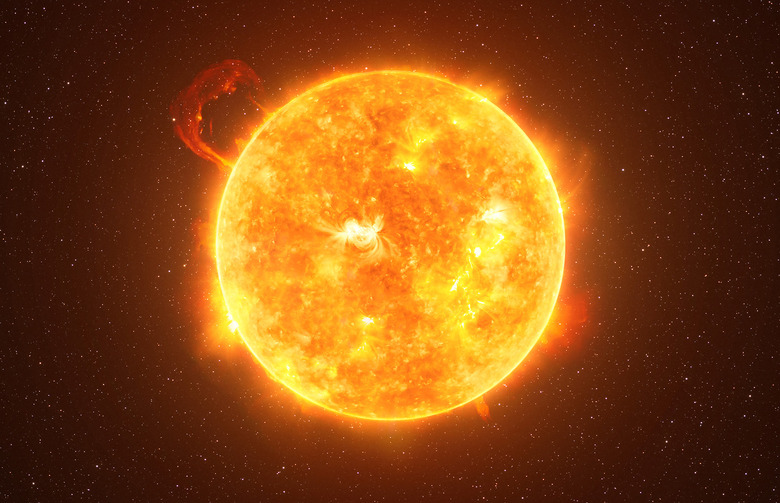ESA Solar Orbiter Captures Breathtaking Up-Close Video Of The Sun
Last year, the European Space Agency's Solar Orbiter drew closer to the Sun than it ever has, capturing a close-up video of the Sun's broiling surface. The video was captured in September by the Solar Orbiter's Extreme Ultraviolet Imager (EUI). It recorded the video from a distance roughly a third of the distance between the Earth and the Sun.
That means it was extremely close. Closer than any other spacecraft, save the Parker Solar Probe. By getting so close, the Solar Orbiter was able to capture video of "coronal rain," including small eruptions of plasma. The overall appearance gives off the vibes of a hellscape like you might see depicting the underworld in a dark, fantasy world.
You can see an eruption in the video at around the 22-second mark, and while it might appear tiny, it is actually much larger than Earth is, the ESA says. The rain visible across the surface of the Sun is not rain as you might think of it here on Earth, either. Instead, this close-up video of the Sun captures much cooler strands of plasma falling to the surface.
Those strands are roughly 10,000 degrees Celsius, and the background behind the drops of plasma is much hotter, around a million degrees Celsius. Spacecraft like the ESA's Solar Orbiter and NASA's Parker Solar Probe have allowed scientists to get closer looks at the Sun than ever before.
Close-up videos of the Sun like this only help to further the information and data that we have about the star at the center of our solar system. While the Solar Orbiter comes exceptionally close to the Sun, the Parker Solar Probe was the first spacecraft to touch the Sun's outer atmosphere, making it the closest approach so far. But, the Solar Orbiter is capable of capturing better video than Parker, making both spacecraft exceptionally useful for scientists.
